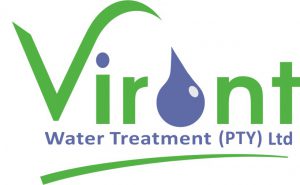Grey vs Black Water
A question that often arises in sewage treatment is that of whether a grey water effluent stream (baths, showers, bathroom sinks, laundry) should be separated from a black water stream (mostly toilets, kitchen sinks) and treated separately. The ratio of grey to black water varies, however grey water tends to be more voluminous than black water and it is for this reason that consideration is given to separating the waste streams so that a treatment plant’s physical size can be a lot smaller and less costly if it is only treating the black water flow. Another motivating factor in separating the flows is the much reduced amount of pathogens in grey water compared to black water, making grey water more attractive for direct use such as irrigation on gardens, golf courses and other planted areas. Generally though, it is preferable to combine the grey and black water streams when treating the effluent for the following reasons:
Black water is rich in organic material, nitrogen and micro-nutrients. This is because black water is typically associated with the production of or processing of food. Under the right conditions naturally occurring bacteria are attracted to the black water as a source of sustainable energy and during the process of converting organic material and nitrogen into energy and biomass the contaminants in the black water are removed. Grey water, on the other hand, tends to have a fairly low organic composition and a high salt content, neither of which tends to excite organisms as a food source. Grey water is typically associated with cleaning and washing and the salt content is mostly in the form of bound phosphates which form part of the chemicals used in washing powders and dish washing liquids as these phosphates are readily oleophyllic and attract dirt containing oils. Naturally occurring bacteria are partially attracted to grey water but to a far lesser extent than with black water and the organic material and phosphorous content is a useful source of energy up to a point. However, complete metabolism of these nutrients is not however always achieved due to the lack of micro-nutrients and inherent salinity in grey water. Consequently other types of less useful bacteria will attempt to consume the useful bacteria that first made contact with the grey water, which usually results in anaerobic conditions developing in the water with its attendant foul odours being emitted.
At a domestic level, homeowners that store grey water in a tank prior to irrigating it on their gardens will usually find that it quickly develops a noxious odour that then gets distributed over their garden and makes the property almost uninhabitable until the stench disappears. Irrigation of untreated grey water can be successful for a fairly wide range of plants, but is not suited to all plants and after a while there will be a build-up of phosphorous and salinity in the ground water. Much of this phosphorous salinity is removed by the organisms as part of their food uptake and metabolism in treating black water, making the grey water more suited to irrigation once it has been treated with the black water. Therefore the best, although not necessarily always practical method to treat grey water is to combine it with black water and treat the two streams together. In this way the naturally occurring useful bacteria benefit from the total organic composition phosphates and nitrogen. One consideration when irrigating water treated in this way, however, is the need to disinfect it first if it is to be used on grassed play areas that are frequented by people. For plants such as flower beds and grass on golf courses though this is less of a concern.
For large scale treatment plants the amount of energy consumed by electrical blowers for treating a black water effluent that has been separated from the grey water is also much the same as for the combined flow as it is the waste organic material that predominates in the black water that needs removing and which is still present, although in a diluted form, in the combined waste streams. Generally then the only additional cost in treating the combined waste flow is in the sizing of the bio-reactor treatment tanks which is a once-off capital cost that is usually offset by the cost of the additional sewer reticulation system that would be required to separate the grey water flow.
For households that want to separate their own grey water flow this can still be practical if the garden receiving the irrigated grey water is large enough to accommodate the flow without a salt build–up. Typically a garden of at least 500m2 in extent will be suited to the grey water flow volumes from a 4-person household. The additional irrigation required for such a size garden also has a dilutory effect on the grey water in addition to leaching it out of the soil, provided the grey water isn’t continuously irrigated in only one particular area. It is very important, however to discharge the grey water to the irrigation network immediately it becomes available to avoid it smelling terribly due to the anaerobic conditions developing, mentioned above. For this reason the storage vessel should not be too big – 500 litres should be ideal for a typical household. The 4EVR range includes a 500 litre horizontal tank that can be buried underground, solving the problem of having to get the grey water flow into the tank. A reasonable sized inlet for unhindered waste flow to the tank is also necessary and a submersible pump for irrigating the water out of the tank is preferable because it will pump small items easily, although it is necessary to watch out for fine nozzles as they tend to trap hair very easily. For irrigating the water onto the garden a cone-type movable sprinkler such as the orange Gardena model is ideal for this purpose.
